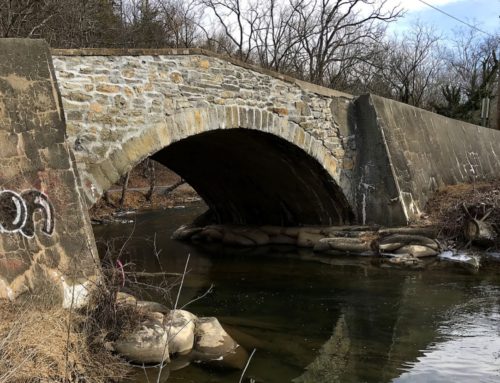Excerpt from the Baltimore Sun:
Orlando “Lanny” Ridout IV, an architectural historian, leading Annapolis preservationist and an author who served as the first director of the Maryland Historical Trust, died Aug. 25 of complications from Parkinson’s disease at Brightview South River in Edgewater.
The lifelong resident of St. Margarets, where his family has lived since 1784, was 95.
“A good way to describe Orlando is that he was a fine gentleman whose passion was historical preservation,” said Edward C. Papenfuse, who was Maryland state archivist from 1975 until his retirement in 2013. “And when he led the Maryland Historical Trust, he cared for and oversaw some of the most remarkable buildings from the Colonial period.”
“Annapolis preservation was one of his greatest accomplishments,” said J. Rodney Little, who directed the Maryland Historical Trust from 1978 until 2014.
“He could tell tons of stories about buildings, and they went back to when he was a teenager and his hobby was doing research on some of the older landmark buildings in Annapolis. He also gave tours of them when he was a teenager,” Mr. Little said.
“Lanny wasn’t just interested in saving and preserving old buildings, he was interested in the stories of those who lived in them,” said Barbara Cooper Ridout, his daughter-in-law, who lives in a 1774 Georgian townhouse on Ridout Row on Duke of Gloucester Street in Annapolis.
Orlando Ridout IV, the son of Orlando Ridout III, a dairyman, and Mary McKinsey Ridout, a homemaker, was born in Annapolis and raised on his family’s farm in St. Margarets.
After graduating in 1939 from Annapolis High School, he earned a bachelor’s degree in 1943 in agriculture from the University of Maryland, College Park.
He enlisted in the Army in 1943 and served as a lieutenant with the infantry in Saipan, Okinawa and Korea. After being discharged in 1946, he returned to work on the family farm with his father.
A Democrat, Mr. Ridout represented Anne Arundel County in the House of Delegates from 1951 to 1962
His interest in historic preservation, local and Maryland history, and family genealogy began early in life and later blossomed into a full-time career as an architectural historian.
“Even as a teenager he had a deep interest in historic houses and local history, making notes of family stories and copying antique documents wherever he found them,” his daughter, Mollie Ridout of St. Margarets, wrote in a biographical profile of her father. “At age 17, he was a member of the Company for the Restoration of Annapolis.”
“We’re late arrivals to the area, I’m afraid,” Mr. Ridout told The Washington Post in a 1991 interview. His ancestor, John Ridout, came to Maryland in 1753 as secretary to Colonial Gov. Horatio Sharpe, who lived at Whitehall, in St. Margarets, and John Ridout eventually inherited the governor’s estate and 25 slaves in 1793.
In 1961, the General Assembly created the Maryland Historical Trust, and Gov. J. Millard Tawes appointed Mr. Ridout as its first director, a position he held until stepping down in 1975.
Mr. Ridout was a founding member of Historic Annapolis, where he served as director of research. He also was the state’s first historic preservation officer.
“It was the first state agency in the U.S. that was specifically dedicated to preserving historic sites; today all of the states have them.” said Mr. Little.
“This was groundbreaking. He initiated a statewide survey to identify worthy preservation sites. The standards he put in place were comprehensive and very high,” Mr. Little said. “The documentation process was also very good. The only other state that came close to Maryland in this regard was Massachusetts.”
The National Historic Preservation Act was passed by Congress in 1966.
“When the federal legislation came along, Maryland was way ahead,” Mr. Little said. “They were building on the foundation and ethics that Lanny had laid.”
“Even though his own personal experience was based on Anne Arundel County and Annapolis, he was able to concentrate on other areas of the state,” Mr. Little said. “But I do think Annapolis was one of his greatest achievements.”
One of Mr. Ridout’s numerous preservation successes was the Annapolis home of William Paca, a signer of the Declaration of Independence. By the mid-1960s, the home was threatened with demolition.
Mr. Ridout also served on the Committee for the Restoration of St. Mary’s City, the Londontown Publik House Commission, the Anne Arundel County Board of Education and the Anne Arundel County Public Library association.
In 1975, he was appointed chairman of the Governor’s Consulting Committee for nominating historical sites for the National Register of Historic Places.
Mr. Ridout’s 1978 master’s thesis at the University of Maryland on the historic Brice House in Annapolis resulted in the book, “Building the James Brice House,” which led to the restoration of the structure.
“It just wasn’t an architectural history but how the house came to be,” Mr. Papenfuse said. “It’s a fine piece of work.”
In the early 1990s, when he was president of Port Annapolis, Mr. Ridout and the organization raised the funds to restore the dilapidated Maynard-Burgess House on Duke of Gloucester Street. The house had been the home of John Maynard, a free black man during the era of slavery who bought freedom for his wife, Maria.
Mr. Ridout’s family also played a significant role in the life of Kunte Kinte, who was the focus of Alex Haley’s 1976 Pulitzer Prize-winning book “Roots.”
While researching his family genealogy, Mr. Ridout discovered that his ancestor John Ridout had sold Kunte Kinte into slavery.
In a 1997 ceremony at Annapolis City Dock, Mr. Ridout shook hands with the late Mr. Haley’s brother.
“It was a wonderful act of reconciliation between the black and white community, as slaves had worked for the Ridouts,” Mr. Papenfuse said.
Mr. Ridout married Elisabeth Prescott Lawton in 1946, and several years later they built a home on a parcel that was part of Whitehall overlooking Whitehall Creek on the Broadneck Peninsula. She died in 2011.
Mr. Ridout enjoyed collecting antique furniture, Asian antiques, and Annapolis-related material, including historic documents, and researching his family genealogy.
He and his wife also liked traveling across the country and to England, where they conducted genealogical research on the Ridout family.
Funeral services will be held at 11 a.m. Sept. 9 at St. Margaret’s Episcopal Church, 1601 Pleasant Plains Road, Annapolis.
In addition to his daughter, he is survived by three granddaughters. His son, Orlando Ridout V, also a noted architectural historian and preservationist, died in 2013.



